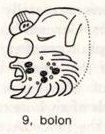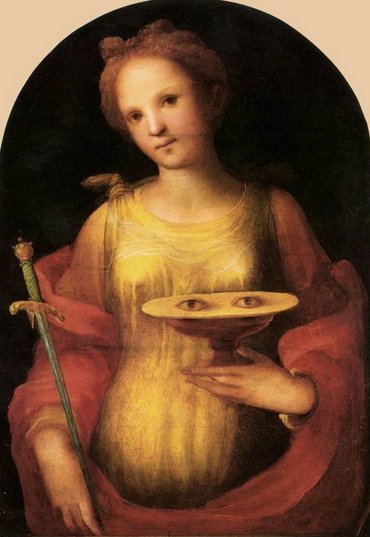These numbers are at present not very helpful for us as such, although the myths will gradually tell us; ... Tane is the twenty-seventh night of the Moon. [What happened with the numbering? One day seems to be missing, because the ordinal number of the preceding night was 25.] It was a day of prayer and on the day following, that of Lono [Rongo], the prayer was freed ... especially as it is evident that the creators of the rongorongo texts played with them in order to make the readers think for themselves. ... Most ingenious Thoth, said the god and king Thamus, one man has the ability to beget arts, but the ability to judge of their usefulness or harmfulness to their users belongs to another; and now you, who are the father of letters, have been led by your affection to ascribe to them a power the opposite of that which they really possess. For this invention will produce forgetfulness in the minds of those who learn to use it, because they will not practise their memory. Their trust in writing, produced by external characters which are no part of themselves, will discourage the use of their own memory within them. You have invented an elixir not of memory, but of reminding; and you offer your pupils the appearance of wisdom, not true wisdom, for they will read many things without instruction and will therefore seem to know many things, when they are for the most part ignorant and hard to get along with, since they are not wise, but only appear wise ... Likewise can very few types of glyphs so far be securely relied upon, but surely we ought to document viri in line Bb9. ... The higher placement of the North Building, with its 13 exterior doorways (reflecting the 13 layers of heaven), and the celestial serpents surmounting the huts identify it with the celestial sphere. The iconography of the West Building, with 7 exterior doorways (7 is the mystic number of the earth's surface), and figures of Pawahtun - the earth god as a turtle - indicate this to be the Middleworld, the place of the sun's descent into the Underworld. The East Building has mosaic elements reflecting the old war cult of Teotihuacan, where tradition had it that the sun was born; thus, this may also be Middleworld, the place of the rising sun. Finally, the South Building has 9 exterior doorways (the Underworld or Xibalba had 9 layers), and has the lowest placement in the compex; it thus seems to be associated with death and the nether regions ...
Its position appears to be 16 days before Christmas Eve:
Viri. 1. To wind, to coil, to roll up; he viri i te hau, to wind, coil a string (to fasten something). 2. To fall from a height, rolling over, to hurl down, to fling down. Viriviri, round, spherical (said of small objects). Viviri te henua, to feel dizzy (also: mimiro te henua). Vanaga. To turn in a circle, to clew up, to groom, to twist, to dive from a height, to roll (kaviri). Hakaviri, crank, to groom, to turn a wheel, to revolve, to screw, to beat down; kahu hakaviri, shroud. Viriga, rolling, danger. Viriviri, ball, round, oval, bridge, roll, summit, shroud, to twist, to wheel round, to wallow. Hakaviriviri, to roll, to round; rima hakaviriviri, stroke of the flat, fisticuff. P Pau.: viriviri, to brail, to clew up; koviriviri, twisting. Mgv.: viri, to roll, to turn, to twist; viviri, to fall to the ground again and again in a fight. Mq.: vii, to slide, to roll, to fall and roll. Ta.: viri, to roll up, to clew up. Viritopa, danger. Mgv.: Viripogi, eyes heavy with sleep. Mq.: viipoki, swooning, vertigo. Churchill. Viti: vili, to pick up fallen fruit or leaves ... In Viti virimbai has the meaning of putting up a fence (mbai fence); viri does not appear independently in this use, but it is undoubtedly homogenetic with Samoan vili, which has a basic meaning of going around; virikoro then signifies the ring-fence-that-goes-about, sc. the moon. In the Maori, aokoro is the cloud-fence ... Churchill 2.
However, between viri in Bb9-16 and Christmas Eve was Lucia (she who would offer her eyes for alighting):
In the dark month of December (north of the equator) the preparations for a new Sun were set in full swing, i.e. in order to 'fish up Land' once again: ... Before the exploit that is related here, the sea was greater and the land was less. Only Hawaiki, the homeland, was dry for men. Maui, in spite of his timid brothers' fears, pulled up the fish that bears his name. The Maori say that the Fish of Maui is New Zealand ...
Here we should remember and compare with similar glyphs early in the G text:
If my comparison is relevant, then the time difference is not half a year (183 right ascension days) but 265 days. Or expressed better: 365 + 85 - 350 = 450 - 350 = 100 days. This suggests the precession had carried the fixed stars ahead with *100 days. My estimate for the precession since the Golden Age of the Bull is *64. But then we should add 16 because at that ancient time they had waited for the return to visibility of the star. 64 + 16 = 80 = 100 - 20. Thus it was not March 21 but March 1 which was relevant - as also the Romans saw it: ... Caesar was forewarned of the threat by the prophet Spurinna, who told him that a great threat was coming at Idus Martiae or just before [i.e. at 3-14]. The day arrived and Caesar was still living. He was walking to his meeting with the Senate when he happened to encounter Spurinna and told him jokingly that he was still alive. Spurinna calmely answered that the day had yet not ended. The Romans divided their months in two parts and the dividing point was Idus, which in some way was connected with full moon. March 15 was the midpoint of March, which is close to spring equinox. The old agricultural year defined the beginning of the year to the time when sun returned, and it was connected with Mars ... ... The leap day was introduced as part of the Julian reform. The day following the Terminalia (February 23) was doubled, forming the 'bis sextum - literally 'double sixth', since February 24 was 'the sixth day before the Kalends of March' using Roman inclusive counting (March 1 was the 'first day') ... 540 / 5 - 20 = 88 (March 21 + 8) = March 1 (366 / 6) + 4 weeks.
And before Lucia there were 5 days beginning at December 8:
|
|||||||||||||||||||||||||||||||||||||||||||||||||||||||||||||||||||||||||||||||||||||||||||||||||||||||||||||










.jpg)
.jpg)
